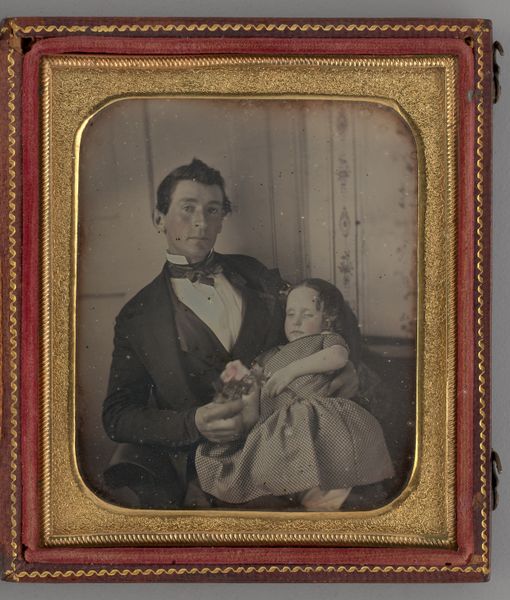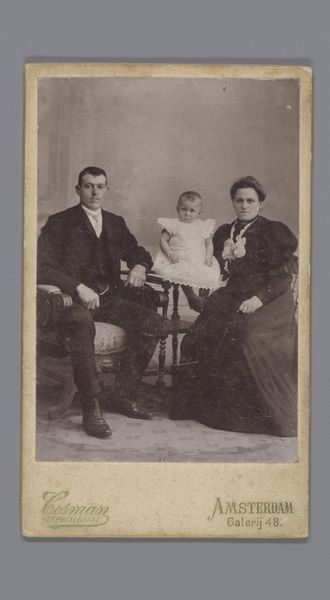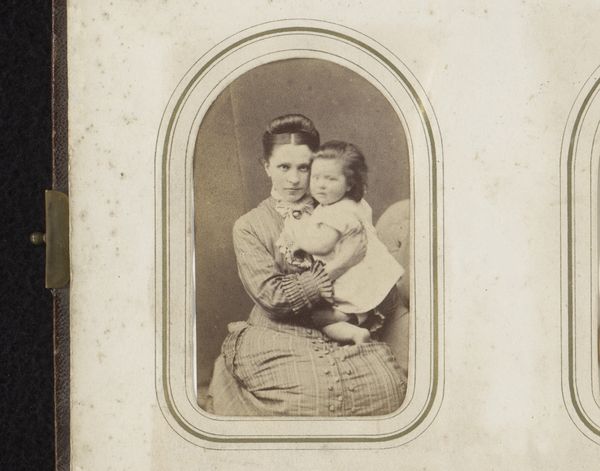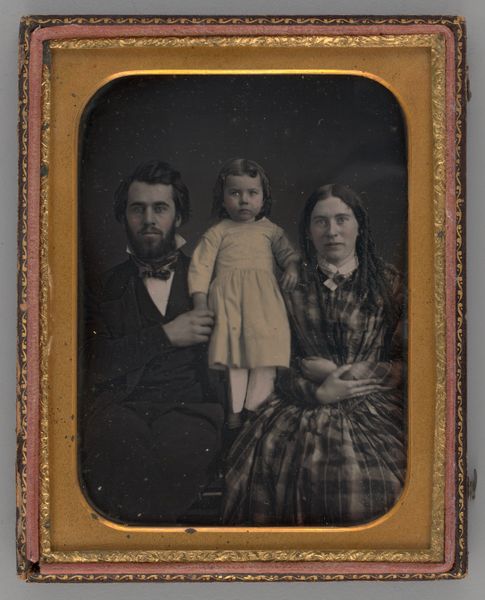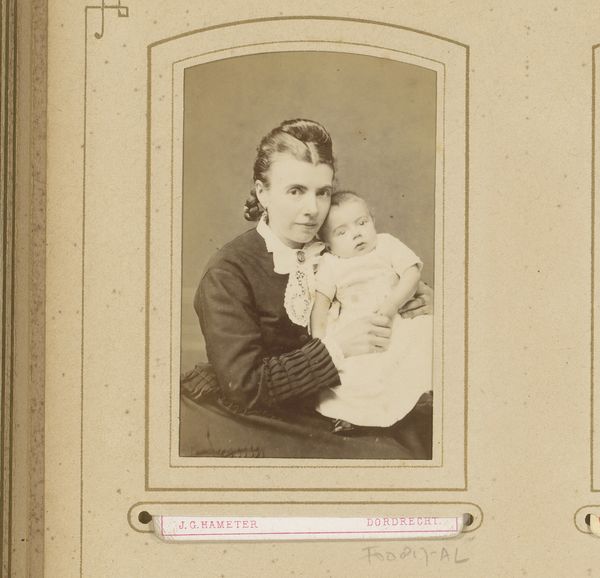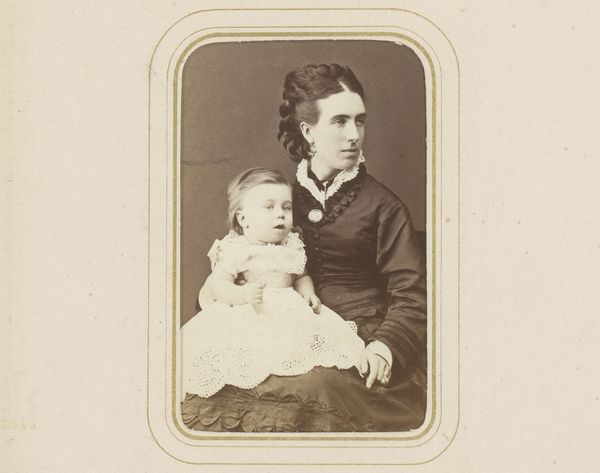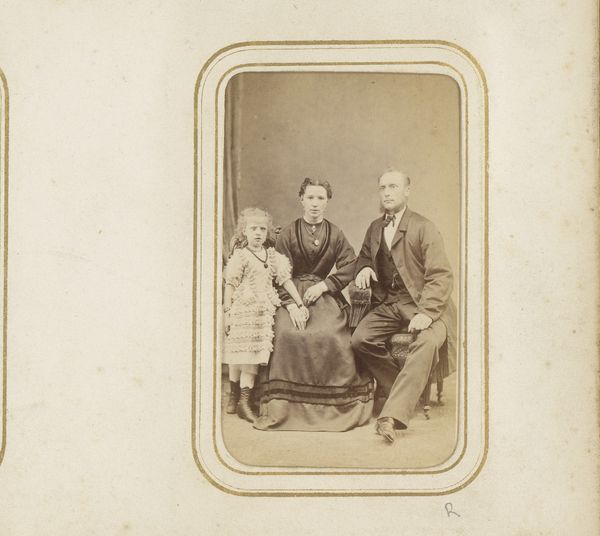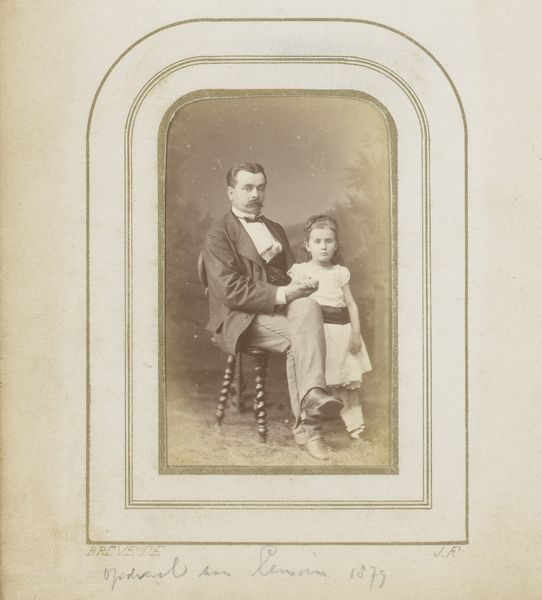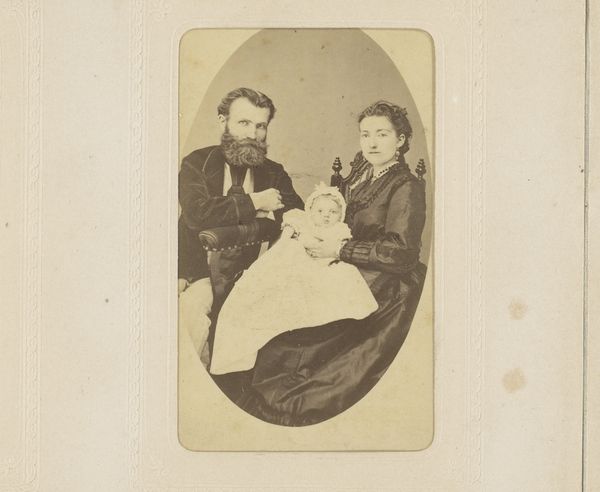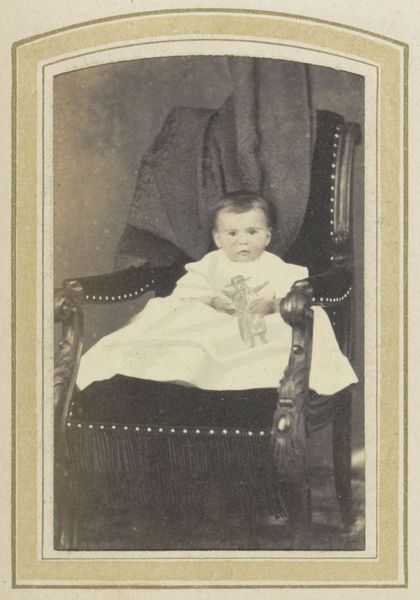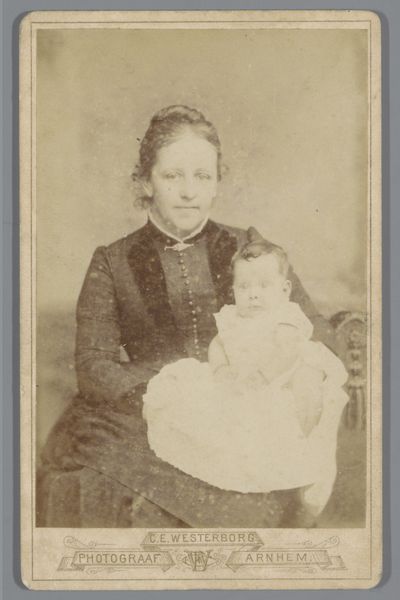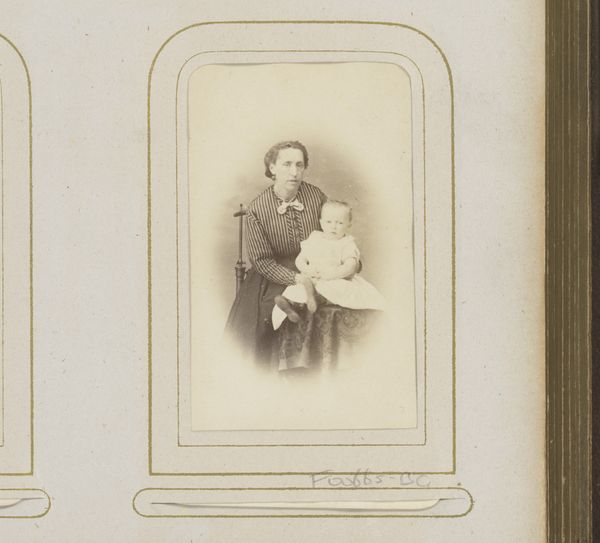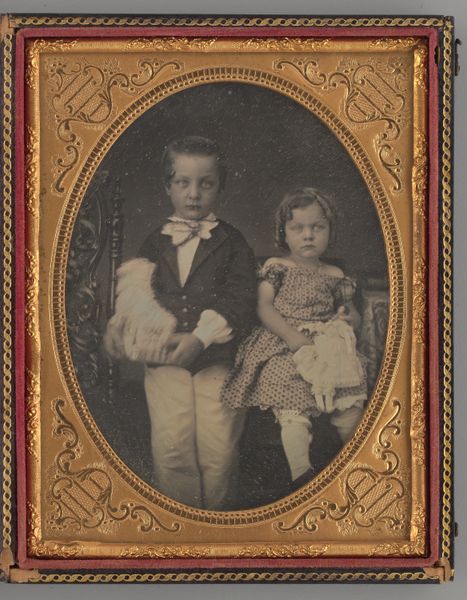
daguerreotype, photography
#
portrait
#
photo restoration
#
daguerreotype
#
photography
#
framed image
#
group-portraits
#
19th century
#
historical font
Dimensions: image (visible): 14.9 × 10.3 cm (5 7/8 × 4 1/16 in.) mat: 16.6 × 12 cm (6 9/16 × 4 3/4 in.) case (closed): 18.3 × 13.8 cm (7 3/16 × 5 7/16 in.)
Copyright: National Gallery of Art: CC0 1.0
Curator: This is an evocative portrait of a father and daughter dating from around the 1860s, and it's rendered in a daguerreotype, an early form of photography. Editor: It strikes me as a somber image. The heavy shadow, the stern expressions… and the way the daughter seems almost ethereal, a soft glow against the darkness. The ornate frame surrounding the oval plate really stands out too. Curator: The daguerreotype was incredibly popular for portraiture at the time. Consider the labor and cost—posing for extended periods! A permanent record, certainly more accessible than a painted portrait but still possessing immense cultural weight as a way to establish legacy and maintain family connection. Editor: Absolutely, the materiality informs that weight. The polished silver-plated copper, meticulously prepared and processed… it speaks to a different kind of craftsmanship. Did they pose at a photographic studio? Or perhaps there was traveling daguerreotypist that worked on location. I'm fascinated by how they handled light for the photo. Curator: Yes, light would have been critical! And there's an intriguing stillness here, a sense of almost arrested time. Given its long exposure time, do you see symbolism of power? Or maybe protection? A desire for remembrance and stability, too, amidst a rapidly changing world? Editor: Or perhaps also, we should consider its fragility? The mirrored surface of the daguerreotype is prone to scratching and tarnishing and fading, even with the best preservation efforts. And the act of consumption should not be understated either, considering the use of silver for its manufacturing process. It hints to that complicated and evolving social relationship with photography itself as this method and these images turned into heirlooms passed down through generations. Curator: Very true, there's a delicate quality that almost amplifies the connection with those bygone eras. It almost asks for quiet reflection. Editor: Definitely! It speaks of the transient nature of our human lives that is still capable of moving and engaging today.
Comments
No comments
Be the first to comment and join the conversation on the ultimate creative platform.
